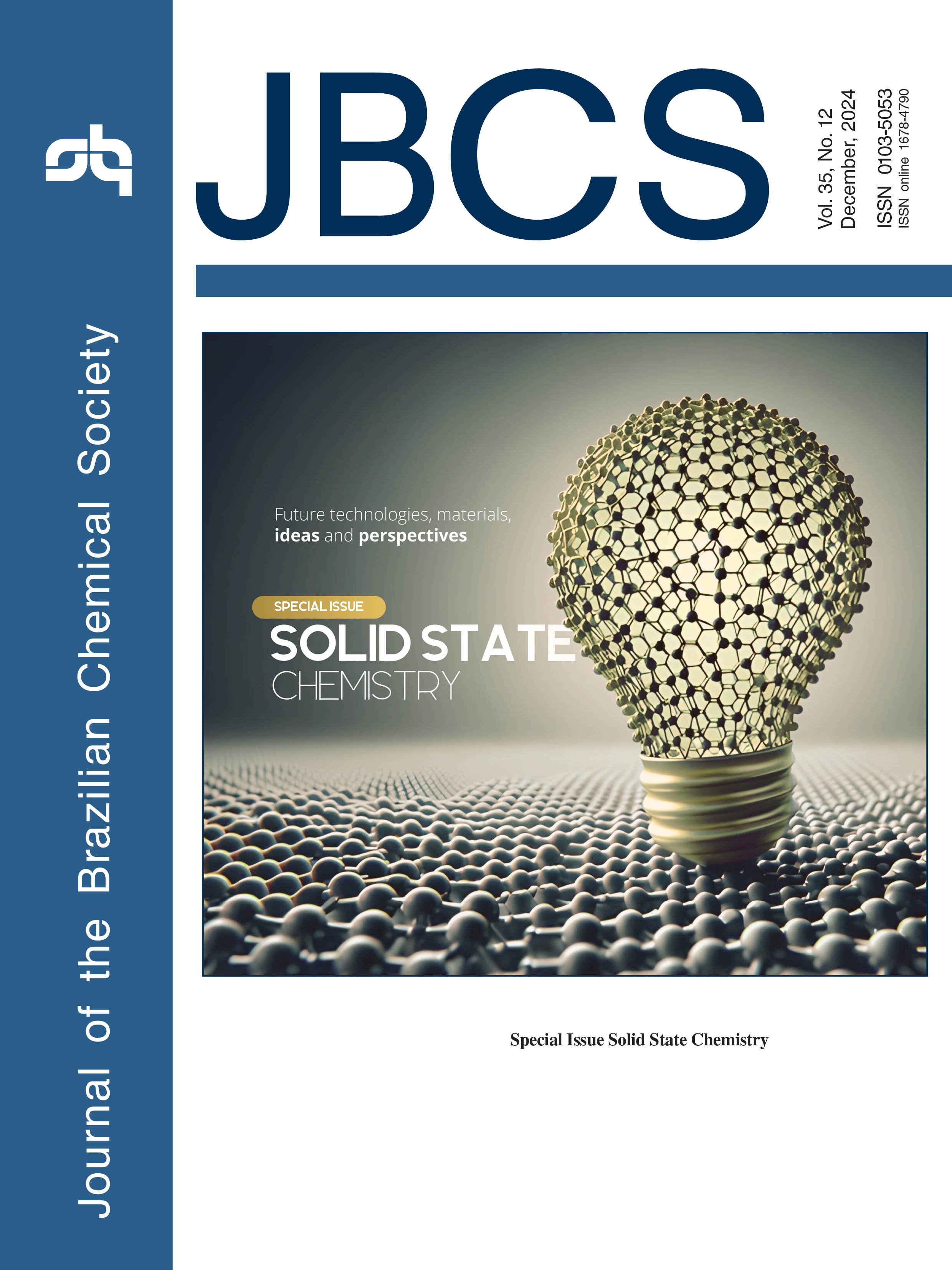vol. 35, No. 12, 2024
This special issue offers readers an engaging and insightful look into Solid State Chemistry covering a range of recent and significant topics of materials, highlighting the ongoing importance and impact of the field (i) materials for energy and sustainability, (ii) materials for biomedical applications, and (iii) advanced preparation methods and multifunctional materials.
Special Issue Solid State Chemistry
Account J. Braz. Chem. Soc. 2024, 35(12), e-20240156, 1-13
Ionic Silsesquioxanes: A Versatile Tool to Architect Multifunctional Nanostructured Materials
Tania Maria H. Costa  ; Eliana W. de Menezes
; Eliana W. de Menezes  ; Leliz T. Arenas
; Leliz T. Arenas  ; Edilson Valmir Benvenutti
; Edilson Valmir Benvenutti
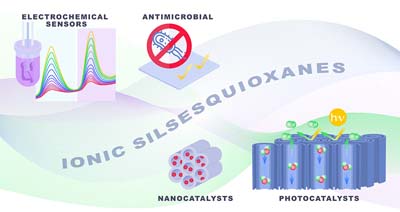
Ionic silsesquioxanes, silica based hybrid polymers with amazing properties, which play important roles in the architecture of multifunctional nanostructured materials to be applied in priority areas such as health, food, and sustainable energy.
https://dx.doi.org/10.21577/0103-5053.20240156
Articles J. Braz. Chem. Soc. 2024, 35(12), e-20240105, 1-12
Detection of Psychoactive N,N-Dimethyltryptamine Alkaloid Based on Surface‑Enhanced Raman Scattering Using Gold Nanostars in Flexible Inkjet‑Printing Paper Substrates
Edison Huertas-Montoya  ; Anerise de Barros
; Anerise de Barros  ; Lucas M. F. Oliveira; Paola A. Caro Aponte; Alexandre L. R. Oliveira; Flavio M. Shimizu
; Lucas M. F. Oliveira; Paola A. Caro Aponte; Alexandre L. R. Oliveira; Flavio M. Shimizu  ; Alessandra Sussulini
; Alessandra Sussulini  ; Fernando A. Sigoli
; Fernando A. Sigoli  ; Italo O. Mazali
; Italo O. Mazali
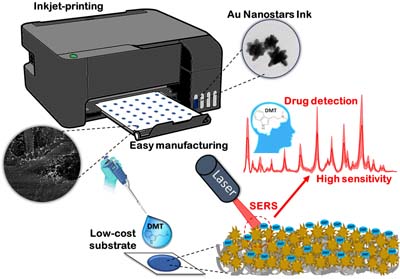
Inkjet-printed flexible surface-enhanced Raman scattering (SERS) sensors equipped with Au nanostar-based ink marks, a significant advancement in paper-based sensor technology. These sensors exhibit promising potential for the detection of biomolecules, such as the psychoactive N,N-dimethyltryptamine alkaloid, even at ultralow concentrations.
https://dx.doi.org/10.21577/0103-5053.20240105
J. Braz. Chem. Soc. 2024, 35(12), e-20240106, 1-7
Tailoring Charge Carriers through Solid-State Mechanochemical Synthesis Bismuth Nanoparticles Directly onto BiVO4 Surface
Leandro A. Faustino  ; Ismael P. L. Xavier
; Ismael P. L. Xavier  ; Paulo F. M. de Oliveira
; Paulo F. M. de Oliveira  ; Susana I. Cordoba de Torresi
; Susana I. Cordoba de Torresi

The semiconductor BiVO4 served as both a support and a precursor for the synthesis of plasmonic metallic bismuth nanoparticles via a mechanochemical one-pot route. The mechanochemical synthesis enhances the charge carriers and the optical properties, making it a valuable approach in various fields such as catalysis.
https://dx.doi.org/10.21577/0103-5053.20240106
J. Braz. Chem. Soc. 2024, 35(12), e-20240110, 1-9
Predictive Modeling of Surface Tension in Chemical Compounds: Uncovering Crucial Features with Machine Learning
Paula J. F. Cala; Guilherme G. Dariani  ; Eduardo T. A. Veiga; Pedro H. D. Macedo; Amauri J. Paula
; Eduardo T. A. Veiga; Pedro H. D. Macedo; Amauri J. Paula  ; James M. Almeida
; James M. Almeida

Machine learning methodologies, particularly XGBoost (extreme gradient boosting), demonstrate superior accuracy in predicting hydrocarbon surface tension, offering potential efficiency improvements in various industrial and laboratory processes.
https://dx.doi.org/10.21577/0103-5053.20240110
J. Braz. Chem. Soc. 2024, 35(12), e-20240114, 1-12
Cobalt(II) Schiff-Base Complexes with Substituents of Varying Electron‑Withdrawing Character: Synthesis, Characterization, DFT Calculations and Application as Electrocatalysts for Oxygen Reduction Reaction
Fagner S. Moura  ; Everton T. da Silva
; Everton T. da Silva  ; Talis U. da Silva
; Talis U. da Silva  ; Rachel D. dos Santos; Sérgio P. Machado
; Rachel D. dos Santos; Sérgio P. Machado  ; Francisco M. S. Garrido
; Francisco M. S. Garrido  ; Marta E. Medeiros
; Marta E. Medeiros  ; Annelise Casellato
; Annelise Casellato

We report cobalt(II) complex-modified electrodes in which the effect of substituent groups affects their redox properties. In summary, the nature of -NO2 group facilitates the reduction of O2 under the evaluated conditions.
https://dx.doi.org/10.21577/0103-5053.20240114
J. Braz. Chem. Soc. 2024, 35(12), e-20240120, 1-9
Simple and Fast Preparation of Transparent Conductive Films of Silver Nanowires Obtained by a Salt Assisted Polyol Method
Barbara P. G. Silva; Willian C. da Silva; Stefany R. Saraiva; Larissa Otubo
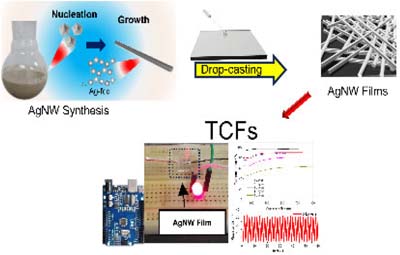
Transparent conductive films of silver nanowires deposited on glass by drop-casting method.
https://dx.doi.org/10.21577/0103-5053.20240120
J. Braz. Chem. Soc. 2024, 35(12), e-20240121, 1-12
Revisiting the Synthesis and Characterization of Hybrid Nanomaterial Constituted by Folate Intercalated into M2+/Al3+ (M2+ = Mg2+ and Zn2+) Layered Double Hydroxide
Vagner R. Magri  ; Caroline S. de Matos
; Caroline S. de Matos  ; Michele A. Rocha
; Michele A. Rocha  ; Christine Taviot-Gueho
; Christine Taviot-Gueho  ; Vera R. L. Constantino
; Vera R. L. Constantino
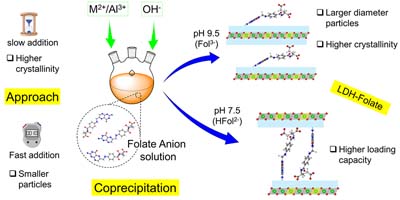
This work revisited the intercalation of folate anions (HFol2- or Fol3-) into layered double hydroxide constituted by M2+/Al3+ (M2+ = Mg2+ or Zn2+).
https://dx.doi.org/10.21577/0103-5053.20240121
J. Braz. Chem. Soc. 2024, 35(12), e-20240124, 1-6
Synthesis of Cadmium Oxyorthosilicate by a Sol-Gel Method
Elena I. A. H. P. Santos; Flavio M. Vichi
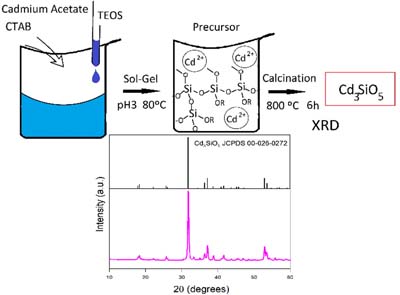
Cadmium oxyorthosilicate Cd3SiO5 was obtained for the first time by a sol-gel method.
https://dx.doi.org/10.21577/0103-5053.20240124
J. Braz. Chem. Soc. 2024, 35(12), e-20240126, 1-11
Exploring Iron Oxide Catalysts for Acetone Hydrodeoxygenation: Making Use of an Earth-Abundant Resource
Pedro B. M. Nunes  ; Guilherme B. Strapasson
; Guilherme B. Strapasson  ; Gabriel B. Báfero
; Gabriel B. Báfero  ; Daniela Zanchet
; Daniela Zanchet
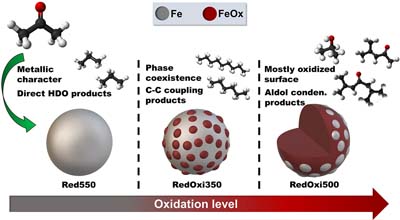
Pre-treatments applied in γ-Fe2O3 nanopowder to vary the ratio among iron species, optimizing selectivity for the acetone hydrodeoxygenation (HDO) reaction.
https://dx.doi.org/10.21577/0103-5053.20240126
J. Braz. Chem. Soc. 2024, 35(12), e-20240134, 1-6
Phthalates Adsorption on Nanostructures for Environmental Remediation: an ab initio Study
Mariana Z. Tonel  ; Jaine Schemmer
; Jaine Schemmer  ; Laura O. Vendrame
; Laura O. Vendrame  ; Ivana Zanella
; Ivana Zanella  ; Solange B. Fagan
; Solange B. Fagan

Throughout the water course design, contaminants are initially present, then pass through the proposed filtration system of this study, resulting in clean water.
https://dx.doi.org/10.21577/0103-5053.20240134
J. Braz. Chem. Soc. 2024, 35(12), e-20240138, 1-9
Why Ceria Nanoparticles Obtained from Ce-MOFs Exhibit Higher Catalytic Efficient in Soot Combustion? Understanding the Role of Intrinsic Properties of a Cerium-Organic Framework to Produce CeO2
Viviane C. Gomes  ; Ayla Roberta Serra
; Ayla Roberta Serra  ; Gabriel C. de Sousa
; Gabriel C. de Sousa  ; Cláudio Roberto Neri
; Cláudio Roberto Neri  ; Baiwen Zhao; Juliana F. de Lima
; Baiwen Zhao; Juliana F. de Lima  ; Richard I. Walton
; Richard I. Walton  ; Osvaldo Antonio Serra
; Osvaldo Antonio Serra
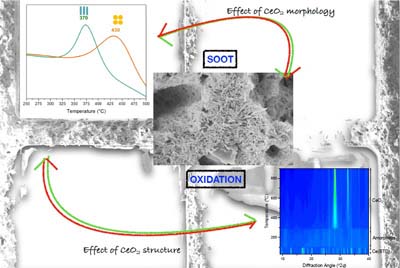
Facile method for preparing an active CeO2 material through direct decomposition of the metal-organic framework (MOF) Ce-BTC for application in soot catalysis.
https://dx.doi.org/10.21577/0103-5053.20240138
J. Braz. Chem. Soc. 2024, 35(12), e-20240139, 1-9
Adsorption Kinetics of Tartrazine Dye on Activated Carbon Derived from Guava (Psidium guajava) Seeds
Elinei N. C. de Almeida; Erlan A. Pacheco; Koji J. Nagahama; Tereza Simonne M. Santos; Alexilda O. de Souza
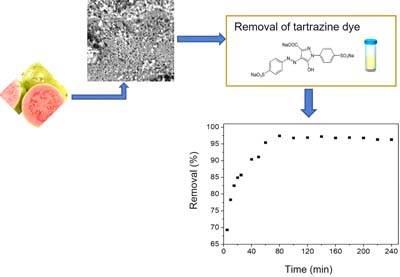
Low-cost activated carbon derived from guava seeds was used to remove tartrazine dye from aqueous solution with more than 90% efficiency.
https://dx.doi.org/10.21577/0103-5053.20240139
J. Braz. Chem. Soc. 2024, 35(12), e-20240140, 1-13
Complex Oxides Synthesized via Arc Furnace: a Fast, Direct and Effective Approach to Obtain Functional Materials
Nadia G. Macedo  ; Miguel T. Galante
; Miguel T. Galante  ; Leonardo C. Soares
; Leonardo C. Soares  ; Jéssica C. Alvim
; Jéssica C. Alvim  ; Vanderlei S. Lima
; Vanderlei S. Lima  ; Marcio Sangali
; Marcio Sangali  ;
;
João F. Q. Rodrigues  ; Rubens Caram Jr.
; Rubens Caram Jr.  ; Claudia Longo
; Claudia Longo
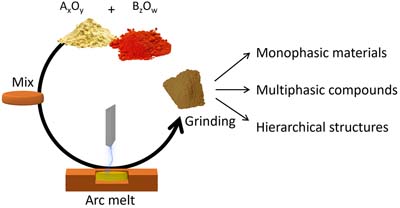
The arc melting synthesis is a four-step process: (i) combination of the precursor oxides; (ii) homogenization and compression into a pellet; (iii) quick melting by an electrical arc (inert atmosphere) and (iv) grinding of the arc melted pellet to obtain particles.
https://dx.doi.org/10.21577/0103-5053.20240140
J. Braz. Chem. Soc. 2024, 35(12), e-20240143, 1-10
Archicarbons: New Carbon Allotropes Build from Circular Arches of Carbon Atoms as Building Blocks
Fabio J. F. S. Henrique  ; Felipe L. Oliveira
; Felipe L. Oliveira  ; Pierre M. Esteves
; Pierre M. Esteves
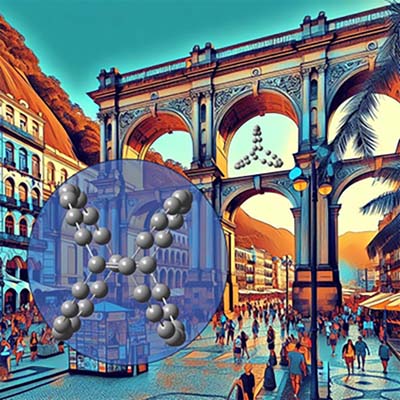
The study investigates molecular and periodic carbon allotropes, known as archicarbons, revealing diverse architectures, unique electronic properties, and substantial potential for semiconductor applications.
https://dx.doi.org/10.21577/0103-5053.20240143
J. Braz. Chem. Soc. 2024, 35(12), e-20240148, 1-14
Biocorona Formation and Hemolytic Effects of Graphene Oxide-Silver Nanoparticles
Nathalia C. L. Azevedo  ; Aline M. Z. de Medeiros
; Aline M. Z. de Medeiros  ; Gabriela H. da Silva
; Gabriela H. da Silva  ; Milena L. Brito
; Milena L. Brito  ; João M. L. Faria
; João M. L. Faria  ;
;
Fabrício S. Delite  ; Amauri J. Paula
; Amauri J. Paula  ; Diego S. T. Martinez
; Diego S. T. Martinez

Nanobio-interactions of graphene oxide-silver nanoparticles with human blood biomolecules have critical influence on surface chemistry and colloidal behavior linked to hemolysis mitigation.
https://dx.doi.org/10.21577/0103-5053.20240148
J. Braz. Chem. Soc. 2024, 35(12), e-20240151, 1-14
Validation of Electrical Impedance Technique in Real-Time Using the xCELLigence as an Interference-Free Method for Assessing Cytotoxicity of Silver and Hydroxyapatite Nanoparticles
Ekeveliny A. Veschi; Wanderson de Souza; Myrella K. G. Nobre; Fernanda Sias; Bárbara Gomes; Beatriz L. Roquett; Nathalia Müller; Leonardo Boldrini; Celso Sant'anna; Jose Mauro Granjeiro
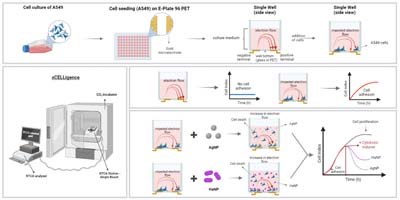
Cells A549 seeded on the E-plate are monitored in real-time by xCELLigence. Cell index (CI) is recorded as they adhere and proliferate. With no barriers to the flow of electrons, the CI is zero. AgNPs and HANPs impact proliferation, altering the CI.
https://dx.doi.org/10.21577/0103-5053.20240151
J. Braz. Chem. Soc. 2024, 35(12), e-20240164, 1-13
Influence of Graphene Oxide Concentration and Fluorophore Charge on the Formation of Non-Fluorescent GO-Fluorophore Complexes
Danilo R. C. Ferreira; Tiago Serodre  ; Pedro L. Gastelois; Waldemar A. A. Macedo
; Pedro L. Gastelois; Waldemar A. A. Macedo  ; Estefânia M. N. Martins; Clascídia A. Furtado
; Estefânia M. N. Martins; Clascídia A. Furtado
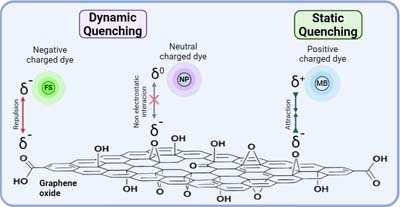
The formation of non-fluorescent complexes and the fluorescence quenching mechanism in graphene oxide (GO)-fluorophore systems depend on the net charge of the fluorophore.
https://dx.doi.org/10.21577/0103-5053.20240164
J. Braz. Chem. Soc. 2024, 35(12), e-20240179, 1-10
Producing High Added Value Chemicals by Analytical Pyrolysis of Cassava Peal over Beta Zeolite-Supported Nickel
Francieli M. Mayer  ; Ana Paula S. de Oliveira; Daliomar L. de Oliveira Júnior; Ariele S. dos Santos; Eduardo H. Tanabe;
; Ana Paula S. de Oliveira; Daliomar L. de Oliveira Júnior; Ariele S. dos Santos; Eduardo H. Tanabe;
Claudia A. Zini  ; Maria do Carmo Rangel
; Maria do Carmo Rangel
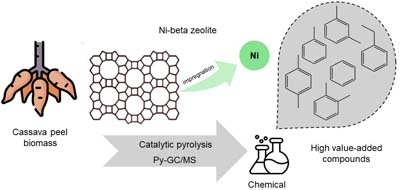
Cassava peel successfully produces benzene, toluene, ethylbenzene and xylenes (BTEX, high added value) without any toxic polyaromatics during fast pyrolysis over beta zeolite-supported nickel (3%).
https://dx.doi.org/10.21577/0103-5053.20240179
Additions and Corrections J. Braz. Chem. Soc. 2024, 35(12), e-20240182, 1-2
Online version ISSN 1678-4790 Printed version ISSN 0103-5053
Journal of the Brazilian Chemical Society
JBCS Editorial and Publishing Office
University of Campinas - UNICAMP
13083-970 Campinas-SP, Brazil
Free access










